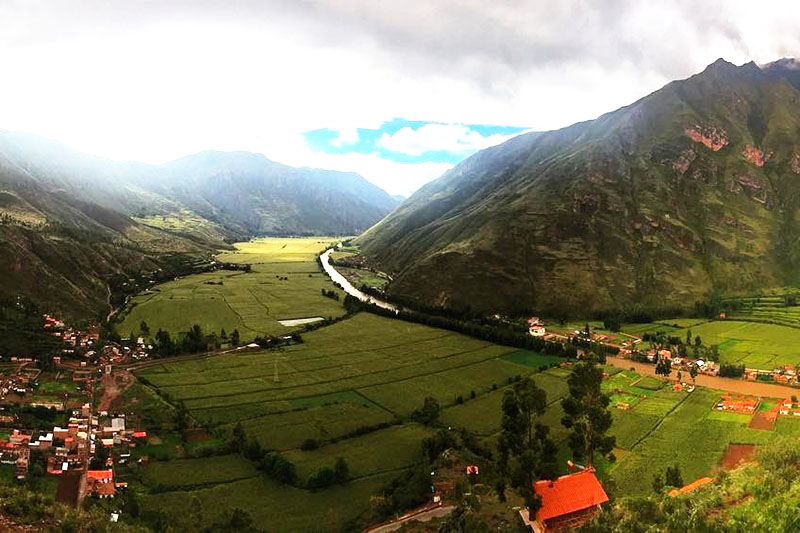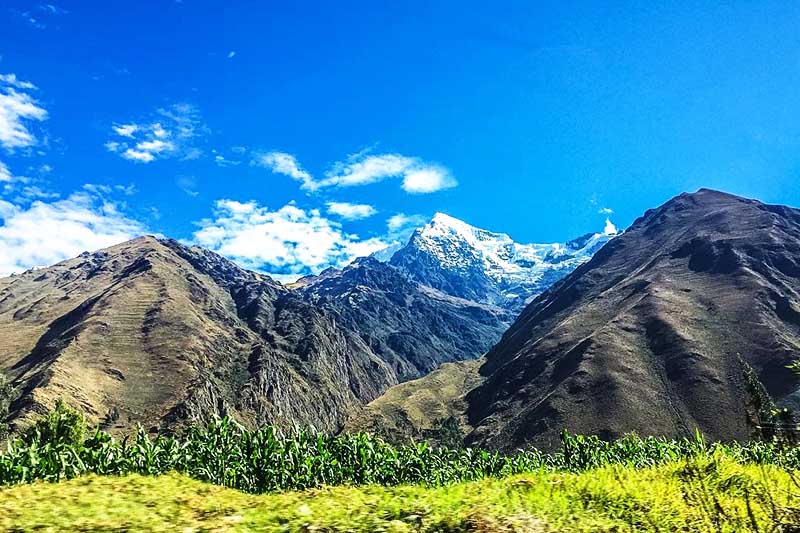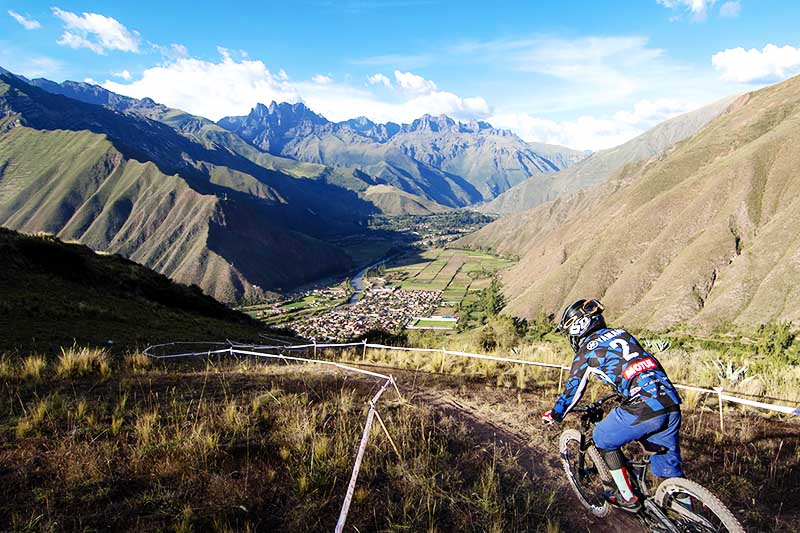10 interesting facts about the Sacred Valley
The empire of the Incas covered a large part of the current South American continent from southern Colombia to northern Argentina, passing through Ecuador, Bolivia and Peru. The Tahuantinsuyo (4 regions) had its center in the current city of Cusco, in the Peruvian Andes. The settlement in this site is largely explained by the existence of a territory rich in agricultural land called the Sacred Valley. It is there where the sovereign Pachacutec ordered the construction of Machu Picchu around the year 1450. It is also there where the Incas built the most important religious sites. What other secrets does this place hide? Learn about the ten most interesting facts about the Sacred Valley in Cusco.
- The Sacred Valley of the Incas is related to the Milky Way
- A perfect climate
- The largest corn in Peru
- Maras, salt wells from more than one hundred million years ago
- Pachacutec, the Inca builder
- Ollantaytambo, the Inca city where people still live
- The Inca resistance
- Ideal place for adventurers
- Tradition and living culture
- The Sacred Valley, a must-see route to Machu Picchu

These are some interesting facts about the Sacred Valley of the Incas
The main tourist attractions of the Sacred Valley of the Incas
The Sacred Valley of the Incas is one of the main destinations in Cusco. Its main tourist attractions are the archaeological sites of Pisac, Ollantaytambo, Chinchero and Moray. In addition, the Sacred Valley is famous for its beautiful landscapes, restaurants and tourist hotels, especially in the town of Urubamba. In the town of Ollantaytambo you take the trains that take you to the Inca citadel of Machu Picchu.
The Sacred Valley of the Incas is related to the Milky Way
- The Incas gave great importance to the Sacred Valley due to the geographical richness of the area. There they grew their main agricultural products. In addition, they built important citadels and religious temples.
- Such was the veneration they had for this region that, according to their worldview, they believed that the Milky Way was reflected in the Urubamba River, the main torrent.
- This important river rises in the Vilcanota mountain range and descends in the east, in the thickness of the jungle.
- According to the Incas, the Urubamba River was the terrestrial reflection of the Milky Way and its constellations: llama, condor, trees, etc.
A perfect climate
- Currently, the Sacred Valley of the Incas is mainly made up of 7 towns: Pisac, Chinchero, Urubamba, Ollantaytambo, Maras, Calca and Yucay.
- Most of these towns are not at high altitudes (Urubamba is, for example, at 2,871 meters above sea level). The peaks that guard these places protect them from the icy winds of the puna.
- The Urubamba River runs through much of the land, making the fertility of the farmland possible. During the day the temperature can reach 23°C. At night, at 4°C.
- For the Incas, this type of climate made it possible to grow a variety of agricultural products.
- Today, the inhabitants of various localities consider that the Valley contains a perfect climate, temperate with pleasant sunshine throughout the year.

White corn cultivation fields in the Sacred Valley
The largest corn in Peru
- The perfect climate predominant in the Sacred Valley created a favorable environment for the cultivation of different agricultural products such as quinoa, beans, olluco, coca and, above all, corn.
- Because each product needs a different type of microclimate for its cultivation, the Incas created an impressive terrace system.
- Testimony of this are the agricultural terraces found in Moray, a system of circular terraces similar to an amphitheater.
- Today, the white corn harvested in these areas (such as in Urubamba) is considered the largest and most delicious in Peru.
- Spain is the main buyer of the so-called ‘giant white corn from Cusco’, whose cob can reach 18 centimeters long and 7 centimeters in diameter.
Maras, salt wells from more than one hundred million years ago
- More than 100 million years ago, in the formation of the Andes Mountains, thousands of salt pools were formed in the current town of Maras in the Sacred Valley.
- A stream nourishes the wells that, after evaporating in the sun, leave natural salt crystals ready to be collected.
- During the Tahuantinsuyo, the Incas took advantage of this natural resource, as well as the current inhabitants of the area.
- It is estimated that there are about five thousand salt wells, which are one of the greatest tourist attractions in Cusco.
- The Maras salt mines are one of the main tourist attractions in Cusco. The entrance fee is 10 soles. Nearby are the circular platforms of Moray, another important tourist attraction.
Pachacutec, the Inca builder
- The main Inca constructions in the Sacred Valley would not have been possible without the government of Pachacutec, the great Inca emperor who ruled from 1438 to 1471.
- The Incas went from being a culture to an empire under the command of this ruler. During his mandate, it went from being a culture to an empire divided into 4 regions (Tahuantinsuyo).
- Pachacutec also managed to defeat the Chancas, bitter rivals, expanding the limits of the Empire.
- Among his main works are the construction of Machu Picchu, the Inca citadels of Pisac, Ollantaytambo, as well as the construction of thousands of kilometers of qhapac ñan.
- In the city of Cusco, he rebuilt the Sacsayhuamán fortress and the Coricancha Temple, as well as many other works.
Ollantaytambo, the Inca city where people still live
- The town, ceremonial center and fortress of Ollantaytambo was the work of the Inca Pachacutec in the 15th century.
- This enclosure is an example of great urban planning and the mastery of the Incas in stone carving.
- The design of the town still maintains its cobblestone streets and terraces where the locals still live. Therefore, it is considered a ‘living Inca city’.
- Ollantaytambo is an important tourist attraction due to the historical importance of its buildings, such as: the Temple of the Sun, the Ñusta bath, the 10 Hornacinas Enclosure and more.
- After the Spanish invasion, it served as a resistance fortress led by Manco Inca, leader of the Inca resistance in the 16th century.
The Inca resistance
- After almost forty years of Spanish invasion, the Inca monarchs revolted with the Sacred Valley of the Incas as their main point of resistance.
- The first was Manco Inca, who after making a pact with the Spanish, rebelled due to the abuses they committed.
- In 1536 Manco Inca fled to the town of Calca after an offensive in Cusco. Furthermore, after his passage, he ordered the chinchero to be set on fire to prevent supply to his pursuers.
- The ceremonial center in Ollantaytambo became a fortress and center of Inca resistance against the conquerors.
- The successors of Manco Inca, Sayri Túpac, Titu Cusi and Túpac Amaru took refuge in the east in the Amazonian town of Vilcabamba.
- Finally, with the capture and death of Túpac Amaru I (in 1572) the Inca resistance ended.
Ideal place for adventurers
- The geography and climate of the Sacred Valley of the Incas are suitable for adventure sports.
- Currently, there are many alternative adventures such as zip lining, canoeing, cycling, mountain climbing, paragliding and, above all, trekking.
- Near the town of Ollantaytambo, the 4-day route to Machu Picchu known as the Inca Trail begins.
- The 4-day hiking route called ‘Lares trek’ begins in the town of Lares.
- Through the roads of the Valley, the adventure sports route known as the Inca Jungle is carried out, which also ends at the Inca Citadel.

There are many adventure sports that you can do throughout the Sacred Valley of the Incas
Tradition and living culture
- The towns of the Sacred Valley seem frozen in time. This is due to the many customs that are kept alive thanks to the efforts of the residents themselves.
- In Pisac, for example, there is a craft market that had its origins in the important commercial transaction during the Viceroyalty.
- In Chinchero, there are many textile centers that preserve the type of yarn inherited through many generations. In the Sunday market of this traditional town, barter or commercial exchange can still be carried out.
- In all these places, their residents still dress in the typical local costume in their daily lives.
The Sacred Valley, a must-see route to Machu Picchu
- Currently, there are only 3 ways to get to the Inca citadel of Machu Picchu.
- The first is through the Inca Trail, a 4-day trekking route, which is the way the Incas reached the Inca city in the past.
- The second is with a 2-hour train trip to the town of Aguas Calientes, a town located on the slopes of the Wonder of the World.
- The third is with the alternative route through Hydroelectric. All of these routes mentioned cross the Sacred Valley of the Incas.
- That is why it is recommended to visit the main towns of that fertile territory before visiting the Inca llaqta.
Advice from people who have been there
 By: Gonzalo T.
By: Gonzalo T.“Safety pin!“
“It is a must not to visit these places, you can appreciate the incredible grandeur and knowledge of the Inca empire. The Temple of the Sun of Ollantaytambo and the Terraces of Moray really clearly convey an impressive intelligence and capacity for achievement. It is advisable to add a visit to the Salineras de Maras since it is very close and really worth it.“
By Ticket Machu Picchu – Last updated, August 15, 2024